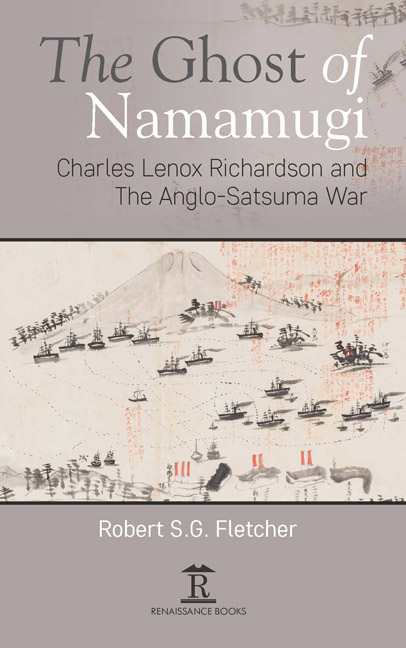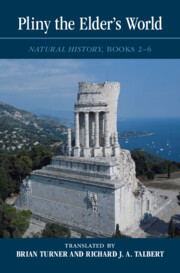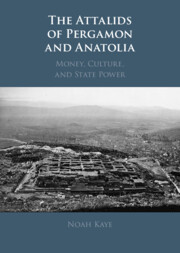Refine search
Actions for selected content:
23990 results in Ancient history
4 - Cities and Other Civic Organisms
-
- Book:
- The Attalids of Pergamon and Anatolia
- Published online:
- 21 April 2022
- Print publication:
- 05 May 2022, pp 188-233
-
- Chapter
- Export citation
Dedication
-
- Book:
- The Attalids of Pergamon and Anatolia
- Published online:
- 21 April 2022
- Print publication:
- 05 May 2022, pp v-vi
-
- Chapter
- Export citation
2 - The Skeleton of the State
-
- Book:
- The Attalids of Pergamon and Anatolia
- Published online:
- 21 April 2022
- Print publication:
- 05 May 2022, pp 74-128
-
- Chapter
- Export citation
List of Abbreviations
-
- Book:
- The Attalids of Pergamon and Anatolia
- Published online:
- 21 April 2022
- Print publication:
- 05 May 2022, pp xv-xviii
-
- Chapter
- Export citation
Contents
-
- Book:
- The Attalids of Pergamon and Anatolia
- Published online:
- 21 April 2022
- Print publication:
- 05 May 2022, pp vii-vii
-
- Chapter
- Export citation
Maps
-
- Book:
- The Attalids of Pergamon and Anatolia
- Published online:
- 21 April 2022
- Print publication:
- 05 May 2022, pp xi-xi
-
- Chapter
- Export citation
Figures
-
- Book:
- The Attalids of Pergamon and Anatolia
- Published online:
- 21 April 2022
- Print publication:
- 05 May 2022, pp viii-ix
-
- Chapter
- Export citation
Index Locorum
-
- Book:
- The Attalids of Pergamon and Anatolia
- Published online:
- 21 April 2022
- Print publication:
- 05 May 2022, pp 425-432
-
- Chapter
- Export citation
Bibliography
-
- Book:
- The Attalids of Pergamon and Anatolia
- Published online:
- 21 April 2022
- Print publication:
- 05 May 2022, pp 370-424
-
- Chapter
- Export citation
1 - Eating with the Tax Collectors
-
- Book:
- The Attalids of Pergamon and Anatolia
- Published online:
- 21 April 2022
- Print publication:
- 05 May 2022, pp 34-73
-
- Chapter
- Export citation
5 - Hastening to the Gymnasium
-
- Book:
- The Attalids of Pergamon and Anatolia
- Published online:
- 21 April 2022
- Print publication:
- 05 May 2022, pp 234-282
-
- Chapter
- Export citation
Copyright page
-
- Book:
- The Attalids of Pergamon and Anatolia
- Published online:
- 21 April 2022
- Print publication:
- 05 May 2022, pp iv-iv
-
- Chapter
- Export citation
Appendix of Epigraphical Documents
-
- Book:
- The Attalids of Pergamon and Anatolia
- Published online:
- 21 April 2022
- Print publication:
- 05 May 2022, pp 364-369
-
- Chapter
- Export citation
Subject Index
-
- Book:
- The Attalids of Pergamon and Anatolia
- Published online:
- 21 April 2022
- Print publication:
- 05 May 2022, pp 433-444
-
- Chapter
- Export citation

Isokrates: The Forensic Speeches (Nos. 16–21)
- Introduction, Text, Translation and Commentary
-
- Published online:
- 30 April 2022
- Print publication:
- 21 April 2022

The Ghost of Namamugi
- Charles Lenox Richardson and the Anglo-Satsuma War
-
- Published by:
- Amsterdam University Press
- Published online:
- 30 April 2022
- Print publication:
- 28 February 2019
-
- Book
- Export citation

Roman Law in Context
-
- Published online:
- 28 April 2022
- Print publication:
- 12 May 2022
-
- Textbook
- Export citation

Pliny the Elder's World
- Natural History, Books 2-6
-
- Published online:
- 26 April 2022
- Print publication:
- 19 May 2022

The Attalids of Pergamon and Anatolia
- Money, Culture, and State Power
-
- Published online:
- 21 April 2022
- Print publication:
- 05 May 2022
-
- Book
- Export citation
Acknowledgments
-
- Book:
- Rome: An Empire of Many Nations
- Published online:
- 14 April 2022
- Print publication:
- 21 April 2022, pp xi-xi
-
- Chapter
-
- You have access
- Open access
- HTML
- Export citation
